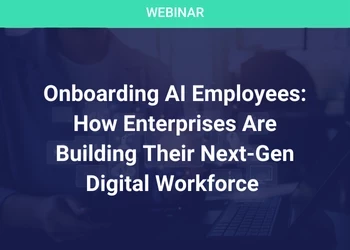The 5 Invisible Reasons Employees Avoid Using Self-Service Tools
Add bookmark
If your self-service tool isn’t being used, the problem isn’t the tool. It’s what nobody is talking about. On paper, it’s a perfect setup. A slick portal. Logical categories. Automated routing. Everything to save time, reduce tickets, and empower users. But in reality? Employees still email their manager. Or ask around. Or open a ticket just to avoid the self-service flow. I’ve seen this happen in global organizations across HR, IT, and Finance. Especially after big investments in platforms like ServiceNow. Usage remains low. Adoption stalls. And leaders keep asking: “But we trained everyone. Why aren’t they using it?”
The problem isn’t visibility. It’s trust, logic, and feel.
Here’s what I’ve learned:
People avoid self-service tools for reasons no dashboard shows. You won’t find the answers in usage logs. You find them in hallway chats, hesitant clicks, and frustrated sighs.
Let’s make the invisible visible.
1. Too Much Logic, Not Enough Logic:
Yes, you read that right. Self-service portals are often too logical from the system's point of view, and not logical enough from the user's. You group services by organizational function. But the user thinks in moments:
"I just started. Where do I go to get a badge, laptop, parking card, and HR access?"
"I’m going on parental leave. What do I need to handle, and when?"
If the user journey doesn’t match their mental model, the flow feels broken. Even if technically it works.
2. The Fear of Getting It Wrong:
Most users would rather do something slower but safe than fast and uncertain. If the tool feels risky, unclear, or unforgiving, they’ll abandon it. The cost of choosing the wrong form or mislabeling a request is too high. Better to escalate than guess. This is especially true in global orgs, where cultural nuances, language complexity, and unclear ownership blur the path.
3. No Feedback, No Confidence:
Self-service often feels like a black hole. Submit. Wait. Hope. If users don’t get acknowledgment, status updates, or confirmation that they did the right thing, their confidence drops. We track SLAs and resolution times. But we rarely measure perceived responsiveness. And that’s the one metric that shapes trust.
Field Insight: Swarovski, GBS Service Management:
When I worked for Swarovski as Head of GBS Service Management, I made a clear distinction between response time and responsiveness. Yes, we could measure the actual time it took to respond to a ticket. But I was more interested in how long the user felt they had to wait. That perception often differed significantly from the metric.
We treated both as perception metrics. By separating them, we could better understand whether we were truly meeting expectations or just hitting green SLAs that looked good on reports but didn’t feel good to the people using the service.
It turned out to be a powerful trust indicator. If responsiveness felt high, people used the system. If it didn’t, they reverted to asking around, emailing managers, or abandoning the tool entirely. And if perceived response time felt off while SLAs were green, we knew we had missed the expectation or, worse, created unrealistic ones. In both cases, we had to manage them actively. Getting this right was critical.
It wasn’t about chasing a number. It was about earning trust.
4. It Doesn’t Feel Like Service:
A portal is not a replacement for human interaction. If your self-service flow feels sterile, robotic, or dismissive, people won’t use it. Even a short intro message like "We’re here to help. Let’s get this sorted quickly" makes a difference.
Tactical Insight: Don’t Hide Behind the Portal:
One of the biggest traps is letting your GBS or service team disappear behind the self-service interface. Make it personal. At Swarovski, we added a name to each case within minutes of creation. Through automatic case assignment, users saw who was handling their request and when they could expect a response.
We also gave users immediate access to a direct communication channel with the responsible advisor. Yes, that opens the door for more contact. But that’s not a bad thing. Most users reach out for two reasons. They either forgot to include something or the urgency changed. Both are valid and manageable. A time, a name, a channel. These three signals build trust. And trust is the difference between a tool that gets ignored and one that becomes part of how people work.
5. The Tool Isn’t the Problem. The Culture Is:
If your organization treats mistakes as failures, people won’t experiment. If users fear being judged for asking “obvious” questions, they won’t try. If managers bypass the portal themselves, the signal is clear. Don’t bother.
No amount of UX polish can overcome cultural resistance to self-help.
Leadership Signal: Tone From the Top:
This is where tone from the top matters. As a GBS team, you’re part of the engine room, but people still take cues from the CEO. If self-service is positioned as "the new normal" and reinforced as a leadership priority, the starting point shifts. It feels less like GBS is trying to save effort and more like this is how the company works now. That doesn’t happen on its own. It pays off to invest time in stakeholder management to get visible support from senior leaders.
When that happens, self-service becomes not just a tool, but part of your internal culture.
What Smart Leaders Do:
They stop blaming users. They start investigating:
- How does the flow feel under pressure?
- What happens when a user gets it wrong?
- Where are the gaps between the system map and the lived experience?
They measure:
- Confidence, not just completion
- Drop-off points, not just load times
- Workarounds, not just requests
They redesign:
- Around real moments, not internal org charts
- With empathy, not just efficiency
- For trust, not just time savings
For example, they might restructure a service request flow to match a specific life moment, like onboarding or parental leave, instead of scattering it across departmental categories. They add proactive status updates, preview guidance, and feedback touchpoints so the experience feels supported, not transactional.
Self-service is an experience challenge.
And yes, getting the experience right does pay off. Reducing workarounds means fewer shadow tickets, less duplicated effort, and faster resolution. Improving perceived responsiveness leads to stronger adoption, higher employee satisfaction, and ultimately better service ROI. You don’t need to lead with these numbers. But knowing them helps make the case.
Prioritize experience. To hear more excellent insights from our SSO Network please join us for our upcoming Future of O2C Virtual Summit.

























